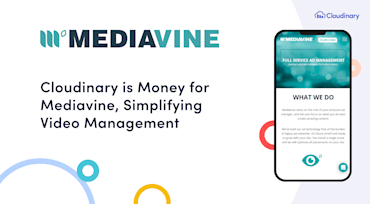Angular is a Typescript-based open source framework for building mobile and web applications. It’s very different from AngularJS because it’s a complete rewrite from ground up. Angular is currently at version 9 and its usage amongst developers keeps increasing by the day.

Indisputably, visual presentations of events, places, people, and even intangible things make deeper impressions and linger in our minds for longer than words or any other communication medium, hence the meteoric rise through the ages of transmitting ideas and promoting brands in the business sector through images. The recent discovery of the first image of a black hole has generated calls for techniques for enhancing digital images. Specifically, the clamor is for quality-oriented tweaks that would result in optimal display and increased visibility of slightly hidden yet important content.

On social media, videos posted by users constitute a significant amount of the content appeal on those platforms. From upload to manipulation to delivery, a smooth, efficient, and effective pipeline for the posting process is mandatory to ensure consistent user sessions and their steadily increasing volume. However, building such an infrastructure is a complex, labor-intensive, and problem-prone undertaking.

If you were reading your social media or news feeds on or around June 11 this year, no doubt you came across your fair share of posts about Queen Elizabeth and her outfit-color faux pas. For her 90th birthday, she chose a solid neon green suit, and it didn't take long for Photoshop fanatics to suggest alternative designs for the Queen's green-screen threads.

As a robust, effective solution for managing digital media, Cloudinary offers a RESTful API for provisioning and maintenance. That API enables numerous operations, from basic ones like image uploads to advanced ones, such as creation of named transformations and AI-based search.

Delivering videos according to the aspect ratios defined by social media for multiple devices and platforms is a growing challenge. The continuously rising volume of vertical videos and the corresponding increase in video traffic on mobile devices (now up to 57% of online videos watched) have only exacerbated the situation, with no letup in sight.

Cloudinary offers a wide array of image transformations and effects to apply to images as part of our image-processing pipeline, helping to ensure that your images fit the graphic design of your website or mobile application. Cloudinary is an open platform, and you can use our APIs, Widgets and UI to build the media management flow that matches your needs.

Tired of depending on other teams or software to create assets in multiple sizes for your responsive web site?
Does importing asset files into TeamSite slow down your web content publishing?
Klish Group is pleased to introduce the OpenText TM TeamSite – Cloudinary connector. Customers of the OpenText TM TeamSite web content management platform can now browse and select images in the same way they always have. Authors can just browse and select the image they want to use and Cloudinary will automatically deliver it in the optimal format and quality to the customer requesting it.


The explosion of rich media and the importance of that media to customer engagement is undeniable. Businesses that take advantage of this trend and try to solve some of the typical asset management pain points often end up using multiple point solutions. While these solutions might solve some problems in the short term, they ultimately lead to content and functional silos, inefficient workflows, and scale limitations.
